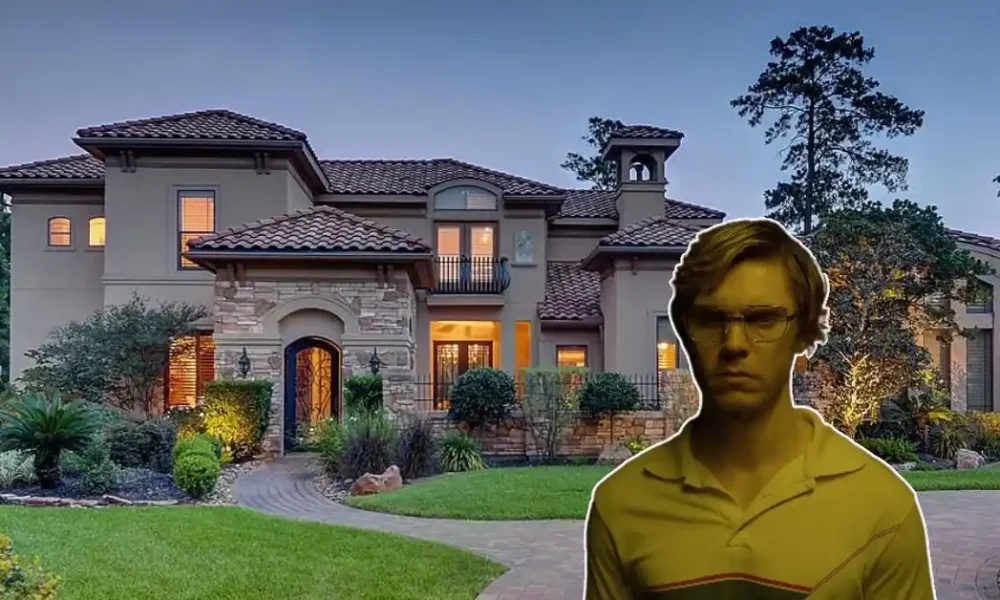The Jeffrey Dahmer House remains one of America’s most infamous crime scenes, forever etched in the minds of those who remember the horrific discoveries made in 1991. Located at 924 North 25th Street in Milwaukee, Wisconsin, this ordinary-looking apartment building became the center of one of the most shocking serial killer cases in U.S. history.
But what many people don’t realize is that the Jeffrey Dahmer House they’re thinking of isn’t standing anymore – it was demolished over 30 years ago. Still, the story of this property, its market value, and what happened there continues to fascinate and horrify people around the world.
The building where Dahmer committed his most heinous crimes was called the Oxford Apartments, and it housed 49 units before being torn down in November 1992. Today, only an empty lot remains where this notorious building once stood, serving as a stark reminder of the dark chapter in Milwaukee’s history.
Who is Jeffrey Dahmer?
Jeffrey Lionel Dahmer, infamously known as the Milwaukee Cannibal, was one of America’s most notorious serial killers who terrorized Milwaukee from 1978 to 1991. Born in 1960, Dahmer’s path to becoming a serial killer began early in his life, with disturbing behaviors that escalated over time.
He was responsible for the murders of 17 young men and boys, most of whom were minorities from Milwaukee’s gay community. What made Dahmer particularly notorious wasn’t just the number of his victims, but the horrific nature of his crimes – he engaged in cannibalism, necrophilia, and the preservation of body parts as trophies.
His killing spree reached its peak during his time at the Jeffrey Dahmer House on North 25th Street, where he lured victims with promises of money for photographs or drinks. The world learned about his crimes in July 1991 when one of his intended victims escaped and led police back to Dahmer’s apartment.
Jeffrey Dahmer House & Location
The most notorious Jeffrey Dahmer House was Apartment #213 in the Oxford Apartments building at 924 North 25th Street in Milwaukee, Wisconsin. This wasn’t a traditional house but rather a one-bedroom apartment in a 49-unit complex that Dahmer called home from May 1990 until his arrest in July 1991.
The building itself was typical for Milwaukee’s housing stock – a brick structure that blended in with the surrounding neighborhood, giving no outward indication of the horrors taking place inside. Before moving to the Oxford Apartments, Dahmer had lived with his grandmother at 2357 S 57th Street in West Allis, a Milwaukee suburb, where he also committed some of his earlier crimes.
The location of the Jeffrey Dahmer House was strategically chosen by Dahmer because it was close to gay bars and areas where he could easily find potential victims. The neighborhood was predominantly African American, and many of Dahmer’s victims came from this community. After Dahmer’s arrest and the discovery of the crime scene, the families of his victims requested that the building be demolished, which happened in November 1992.
Features of Jeffrey Dahmer House
The Jeffrey Dahmer House apartment was surprisingly ordinary on the surface, which made the discoveries inside all the more shocking. The basic apartment features included a one-bedroom layout typical of 1970s apartment construction, with a standard kitchen, living room, small bathroom, and bedroom.
What made this apartment notorious were the horrific modifications Dahmer made for his crimes. Police discovered 11 bodies in various states of dismemberment, 7 skulls (some painted or bleached), and 4 severed heads stored in the refrigerator and freezer. They also found 2 human hearts and other organs preserved in plastic bags, along with a 57-gallon drum used for dissolving body parts with acid.
The apartment contained multiple saws, hammers, and dismemberment tools, plus a Polaroid camera for documenting crimes. Dahmer had created a makeshift altar with skulls and candles, while maintaining ordinary furniture like a beige couch, a fish tank, and a television to avoid suspicion from visitors and neighbors.
House Design and Style
The Jeffrey Dahmer House apartment reflected the typical architectural style of Milwaukee’s affordable housing from the 1970s. The Oxford Apartments building was constructed as a standard urban apartment complex, featuring brick exterior walls and basic interior layouts designed for efficiency rather than luxury.
Dahmer’s unit was a modest one-bedroom apartment with approximately 800 square feet of living space, including a small kitchen, living room, bedroom, and bathroom. The design was functional but unremarkable, with standard fixtures like linoleum flooring in the kitchen, carpeting in the living areas, and basic bathroom amenities.
What made this particular unit stand out wasn’t its architectural features but how Dahmer modified it for his sinister purposes. He installed additional locks on the door for security and privacy, rearranged furniture to create spaces for his criminal activities, and converted normal household areas into tools for his crimes. The building’s design also provided Dahmer with the privacy he needed, as the apartments were relatively soundproof and neighbors minded their own business.
Market Value and Comparisons
The Jeffrey Dahmer House at Oxford Apartments had a unique and tragic impact on Milwaukee’s real estate market. The building was purchased for $325,000 by the Campus Circle Project, a neighborhood redevelopment initiative sponsored by Marquette University, specifically to prevent it from becoming a tourist attraction.
This purchase price reflected both the building’s actual real estate value and the community’s desire to remove this reminder of tragedy from their neighborhood. The 49-unit apartment building was built in the 1970s with typical construction for the era, located in a predominantly minority neighborhood with modest rental rates.
After the crimes were discovered, the property became completely unmarketable due to its infamous history. No traditional real estate transactions were possible after 1991, leading to the community-driven purchase to facilitate demolition. Today, the site remains an empty lot with no redevelopment plans, likely permanently unmarketable due to historical stigma.
Other Houses Owned by Jeffrey Dahmer
Jeffrey Dahmer didn’t own multiple houses in the traditional sense, but he lived in several significant residences connected to his criminal activities. His childhood home in Bath, Ohio, was the family residence where Dahmer’s disturbing behaviors first emerged and the site of his first murder in 1978.
His grandmother’s house in West Allis, Milwaukee, located at 2357 S 57th Street, served as his residence intermittently during the 1980s and was the scene of several murders before his move to Oxford Apartments. This house is still standing as of 2022 and remains privately owned, though it was listed for sale in 201,2 but struggled to find buyers due to its history.
He also lived briefly at 808 North 24th Street before moving to the Jeffrey Dahmer House at Oxford Apartments. This short-term rental was less significant in terms of criminal activity but represents his transition to independent living in Milwaukee. After his arrest, Dahmer had no property ownership and was sentenced to multiple life terms, eliminating any future real estate possibilities.
Conclusion
The story of the Jeffrey Dahmer House serves as a chilling reminder of how ordinary places can become the settings for extraordinary evil. The Oxford Apartments at 924 North 25th Street in Milwaukee may be gone, demolished in 1992, but its legacy continues to fascinate and horrify people more than three decades later.
What makes this case particularly unsettling is how Dahmer transformed a typical one-bedroom apartment into one of America’s most notorious crime scenes, using everyday household items and spaces for his horrific purposes. The building’s demolition was the right choice for the community, allowing victims’ families to find some measure of peace and preventing the site from becoming a macabre tourist attraction.
Today, the empty lot where the Jeffrey Dahmer House once stood serves as a quiet memorial to the 17 young men who lost their lives to one man’s twisted fantasies. The fact that this property remains undeveloped and unmarketable shows how some crimes leave permanent scars on both communities and real estate markets. While we can tear down buildings and fence off lots, the memories of what happened there remind us of the importance of recognizing warning signs and ensuring that such horrors never happen again.




No Comment! Be the first one.